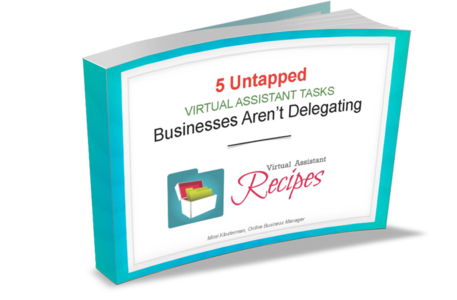Product creation takes a fair amount of planning. It’s tempting to jump right in when you have an inspired idea and start creating. Wait. Before you get too far into your product take a step back and make sure you know who you’re creating the product for, how you’re going to position it, who your competition is, and more. The following checklist will help you make sure that you’re creating the best product for your audience and for your business.
1. Who is your audience?
Before you begin your product creation or start a program, identify the people who will buy the product. Look at their demographics; their age and the region where they live, for example. You can find some of this information in your website analytics.
For other information you may have to do some market research or turn to your business plan and review your target audience information. If the information is still the same, you’re good. Also look at your audience’s psycho-graphics. What are their values? What’s important to them?
2. Product creation – What’s the topic?
What is your product or program going to be about? What problem does it solve for your audience? Here you might want to make a list of the top ten problems that your audience faces. You can then research your topic ideas:
-
-
-
- Survey your audience. There are free survey tools that you can use to email your list with a survey or you can post a survey on social media. Keep in mind that people are more likely to respond to surveys when there is an incentive. You might enter their name into a drawing for a prize that’s relevant to your niche.
- Keyword research. Using an external keyword research tool, dig deep in your niche and find the keywords that people are using to find your information. What keywords are the most popular? What keywords have the least competition? Is there an intersection between popular and competition that fits your needs?
- Analytics. Review your blog and website analytics. What organic search terms do people use to find your website? What blog posts are most popular? What blog posts receive the most comments, likes, or shares?
- Read through your blog and social media comments. What problem is most pervasive?
- Read your emails. What problem do people often ask for help with?
- Review your competition. Have they created any products on similar topics? Download or purchase, if possible, the products. Learn as much about your competition’s products as possible. This will help you ensure that your product is different and it gives you the ability to position your product competitively.
-
-
3. What format will you use to present your information?
There are many different formats to consider and you don’t have to choose just one. For example, you might create an audio product with a downloadable workbook. You can create a video series that comes with an accompanying interview set, workbook and eBook. You get to decide. As you’re brainstorming your options, consider:
-
-
-
-
-
- The format your audience will respond to best. What format will they prefer and what will offer them the most value?
- The format that best supports your information. For example, maybe your product is better as a video than as an eBook.
- What format is your competition using and how can you use a different format or combination of formats to make your product stand out?
- What format fits your price point?
- What format best fits your personality and the assets that you currently have? For example, maybe you’re comfortable creating videos, but not writing books. Or maybe you have a great ghostwriter and you know they can make your product idea a reality.
- What format best fits your current product line and/or sales funnel? Ideally you want your product to compliment or supplement your existing products.
-
-
-
-
4. How much will you charge?
What are your sales goals? The next step is to take a look at the money side of the equation. How much can you realistically charge for your product, and how many people will buy it? Consider:
-
-
-
-
-
- The price of your competition’s products
- The value of the information
- Product creation cost
- Where it fits in your sales funnel
- How you’re going to leverage it. For example, will it lead to additional sales of other products or services? Will it promote affiliate products?
- The price of your other products.
- The point at which most people enter your sales funnel. What are they normally willing to spend when they enter your sales funnel?
-
-
-
-
5. How will you brand your product?
You want your new product to reflect your brand. That means not only do you want it to visually be aligned with your website and other products and branding, you also want it to have the same voice, tone, and style of your other materials. Decide how you’re going to create a consistent brand message in your product.
6. How will you create the product(s)?
Who will you add to your team to help you? Consider:
-
-
-
-
-
- Ghostwriter
- Graphic designer
- Transcriptionist
- Moderator (if you’re hosting a live event and recording it)
- Experts in your niche or complimentary niches (if you’re going to add expert interviews to your product)
- Virtual assistant
- Editor
-
-
-
-
7. How are you going to market and promote your product?
It’s important to think about this before you start the product creation process. You want the marketing for your product to fit seamlessly into your existing marketing strategy. Explore:
-
-
-
-
-
- Email marketing
- Social media
- Advertising
- Affiliates
- Don’t forget there is a three-part process to any product launch. You’ll have a pre-launch, the actual launch, and a post-launch follow up. Create this launch plan before you start creating your product(s).
-
-
-
-
8. Create your sales page.
Start outlining your sales page for your product. Focus on the benefits that your product offers and the problem that it solves. Make sure that your sales page is consistent with the value and information provided in your product.
This may feel like a long list. However, with a few good brainstorming sessions and some help you can get through it in a few days. Then you can get started creating your product and be sure that you’re not missing a thing. Your audience deserves a well thought out product and your business will benefit from the extra time you take to research and plan before you create your product.
So follow this checklist to help you make sure that you’re creating the best product for your audience and for your business.

